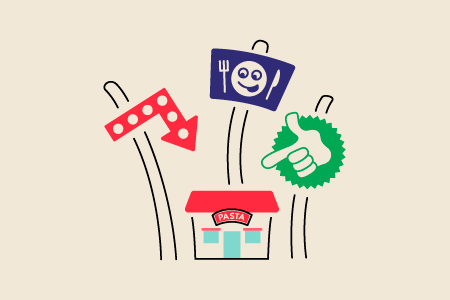Business Insights
Make Your Restaurant A Destination
‘Destination dining' is a relatively new buzzword that’s trending online, but the concept behind it comes from a long-established source

KEY INSIGHTS
- Such is the appeal of the idea that it’s now rapidly being embraced by restaurants, pubs, clubs, bistros and cafes.
- The first step in marketing your restaurant as a ‘destination dining’ experience is to determine what attracts people to your local area and then find ways to capitalise upon this.
- Work with other businesses in the community, including local producers and tourist organisations.
‘DESTINATION DINING' is a relatively new buzzword that’s trending online, but the concept behind it comes from a long-established source — France’s famed Michelin Guide, which awards stars to restaurants and hotels across Europe. It was the Michelin Guide which first described a ‘destination restaurant’ as one with a strong enough appeal to justify customers going out of their way to eat there.
Such is the appeal of the idea that it’s now rapidly being embraced by restaurants, pubs, clubs, bistros and cafes — all seeking to build a distinctive brand identity which will bring in customers from afar and boost both new and repeat business.
The first step in marketing your restaurant as a ‘destination dining’ experience is to determine what attracts people to your local area and then find ways to capitalise upon this — often through working with other businesses in the community, including local producers and tourist organisations. Here are some ways you can do this:
Identify your community’s ‘local flavour’
Whether your business is a beachfront pizzeria in a Gold Coast tourist town, an inner-city pub serving pizza and pasta, or a restaurant in a suburban shopping strip, every local area has its distinctive appeal and points of interest that drawn in visitors, especially during sporting or community events, street fairs and parades, and music or food festivals and fundraisers for local causes. Once you’ve identified the local flavour of your community, you’ll have a starting point to craft a distinctive culinary experience for your customers — perhaps by naming menu items after local icons, by choosing a décor theme that’s in keeping with the community vibe, or by featuring local produce such as wines, craft beers, meats, pastas, gelatos and even cuisine styles.
Partner with local businesses
Tourist attractions, hotels, local food producers and farmers’ markets, wineries and breweries all offer strong cross-promotion opportunities. You can also partner with the local chamber of commerce and tourism board to be featured on websites and to participate in street food festivals and other events in conjunction with local businesses. And you can volunteer your services to run promotional programs such as tasting events or cooking classes aimed at visitors to the area, thereby raising the profile of your business.
Entrench yourself in the local community through event/sports sponsorship
This is an important part of building strong community relationships and can help spread the word about your business farther afield. Sponsoring sports teams, charity events and fundraisers can publicise your brand logo and name not only to locals but to visitors who come to the community to participate in these activities and then stay to try the local food.
Promote the community and area to your customers
Encourage your table staff to talk to customers about the appeal of the local community and what it has to offer. Customers who come from outside the area will often be interested in learning more about the neighbourhood and why it is that you’ve chosen this location for your business. By promoting the area in this way, you’re helping to build its appeal and giving customers another reason to come back — for example, by drawing their attention to a tourist attraction or feature they wouldn’t otherwise be aware of.
Publicise your use of local produce
With customers becoming more and more interested in the provenance of food, demand for local produce has never been higher. If your area is known for a particular type of produce, make sure you include this on the menu. You can promote this through exterior signage, such as a menu board on the pavement or the front wall.
Recommend your best menu items
Whenever you have customers visiting for the first time, make sure your staff draw their attention to the best choices on the menu, such as signature dishes. By choosing these tried and true winners, your first-time customers will enjoy the best your business has to offer — making them all the more likely to return, as well as tell their friends.
Ensure your service and wait times are as efficient as possible
A true destination restaurant is one whose reputation is built not only on its food, location and ambience but also the quality of its service. Especially when bringing in customers from outside the local area, it’s imperative to ensure that they’re not kept standing around for a table or subjected to slow service. Remember that these customers have made a special trip to dine at your restaurant — they’ll be eager and hungry when they arrive, so don’t keep them waiting.
YOU MAY ALSO LIKE



